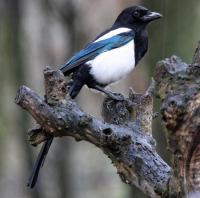- Home
- FAQs
- Customer Video Gallery
- Customer Photo Gallery
- Bird Facts
- Bird Food Blog
- Bird Information
- Feeding Advice
- Small Animal Information
- A to Z of Guinea Pigs
- A to Z of Hamsters
- A to Z of Rabbits
- Basic Care for Guinea Pigs
- Basic Care for Hamsters
- Basic Care for Rabbits
- Basic care for Chinchillas
- Basic care for Ferrets
- Basic care for Gerbils
- Basic care for Mice
- Basic care for Rats
- Buying a Healthy Small Animal
- Does your Reptile need a Licence
- Equipment for Ferrets
- Equipment for Hamsters
- Equipment for Mice
- Equipment for your Chinchilla
- Equipment for your Gerbil
- Equipment for your Guinea Pig
- Equipment for your Rabbit
- Keeping a House Rabbit
- Dog Information
- Cat Information
- Customer Information
- Fat Balls
- Suet Pellets
- Straights
- Seed Mixes
- Suet Treats
- Mealworms
- Bird Feeders
- My Account

| Scientific Name | Delichon urbica |
| Breeding | April-May |
| Fledge Days | 19-25 |
| Incubation Days | 13-19 |
| Lifespan | 2 years |
| Number of Clutches | 2-3 |
| Number of Eggs | 4-5 |
| Size | 12cm |
| Weight | 15-23g |
| Wingspan | 28cm |
Bird Family : Swallows and Martins
House Martin Facts - Information About House Martin
House Martin - Delichon Urbicum
The House Martin is another summer migrant and familiar sight throughout the United Kingdom during our summer months. It is similar to the Swallow and belongs to the same group, the ‘Hirundines’,
It is a well known bird which, like the Swallow, is commonly found nesting under the eaves of houses and other suitable places. The House Martin spends about 6 months here, arriving in April and moving out in October.
Identification:
Adult
- The House Martin, like the Swallow is a fast flying aerial feeder with a forked tail, the tail is much shorter than Swallows and lacks the long streamers.
- Adult males and females are alike.
- House Martins belong to the ‘Hirundine’ family; they are smaller than Swallow, around 14cm in length.
- Like the Swallow the entire upperparts are a deep bluey-black glossed with a blue sheen apart from the rump which is white.
- The large white rump is the diagnostic feature when separating it from Swallow.
- The tail is much shorter, no streamers and all black.
- The House Martins head is two-toned, black above the bill and white under.
- The entire underparts are bright white, this wraps around the bird at the rump.
- The bill is small and black, legs white and feathered, eye black.
- House Martins spend the majority of their time airborne, hawking insects and drinking from pools by low flying skimming.
- They can often be seen perched on telegraph wires close to nest sites.
- They will also form large roosting flocks at dusk and frequently roost in reed beds.
Juvenile
- Juveniles appear from May onwards and look similar to adults.
- Young birds lack blue sheen of the adults and the tail is shorter and blunter than on adults.
- The underparts are dirty creamy white.
- Bill, eye black, legs white as adult.
Status and Distribution
The House Martin is a very abundant breeding summer migrant in the UK with over 400,000 pairs. The Swallow occurs in all counties throughout the UK.
House Martins start to arrive in April and leave in September/October.
Habitat/Food
House Matins occur in all habitat types throughout the UK, woodlands, parks, gardens, farmland, indeed any open country. They prefer to nest in towns and villages.
They are aerial feeders, taking a huge array of insects’ on the wing, they nest under eaves and other suitable overhangs.
Song/Call
Several call notes; most often a rattlely ‘prrripp’ which can be repeated, The alarm call is a stronger , louder dry ‘prryer’’
Song is a series of twitters and chips with no real direction or structure.






